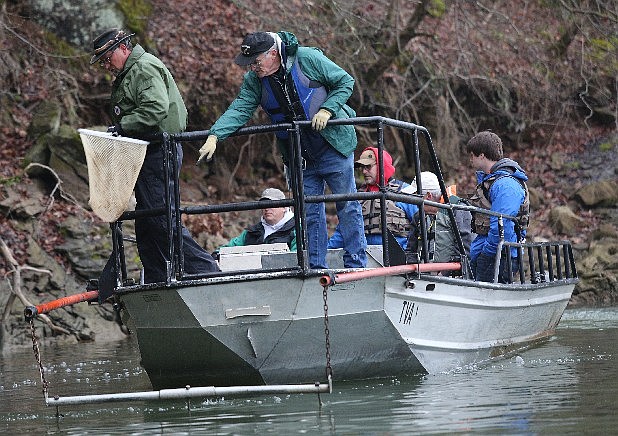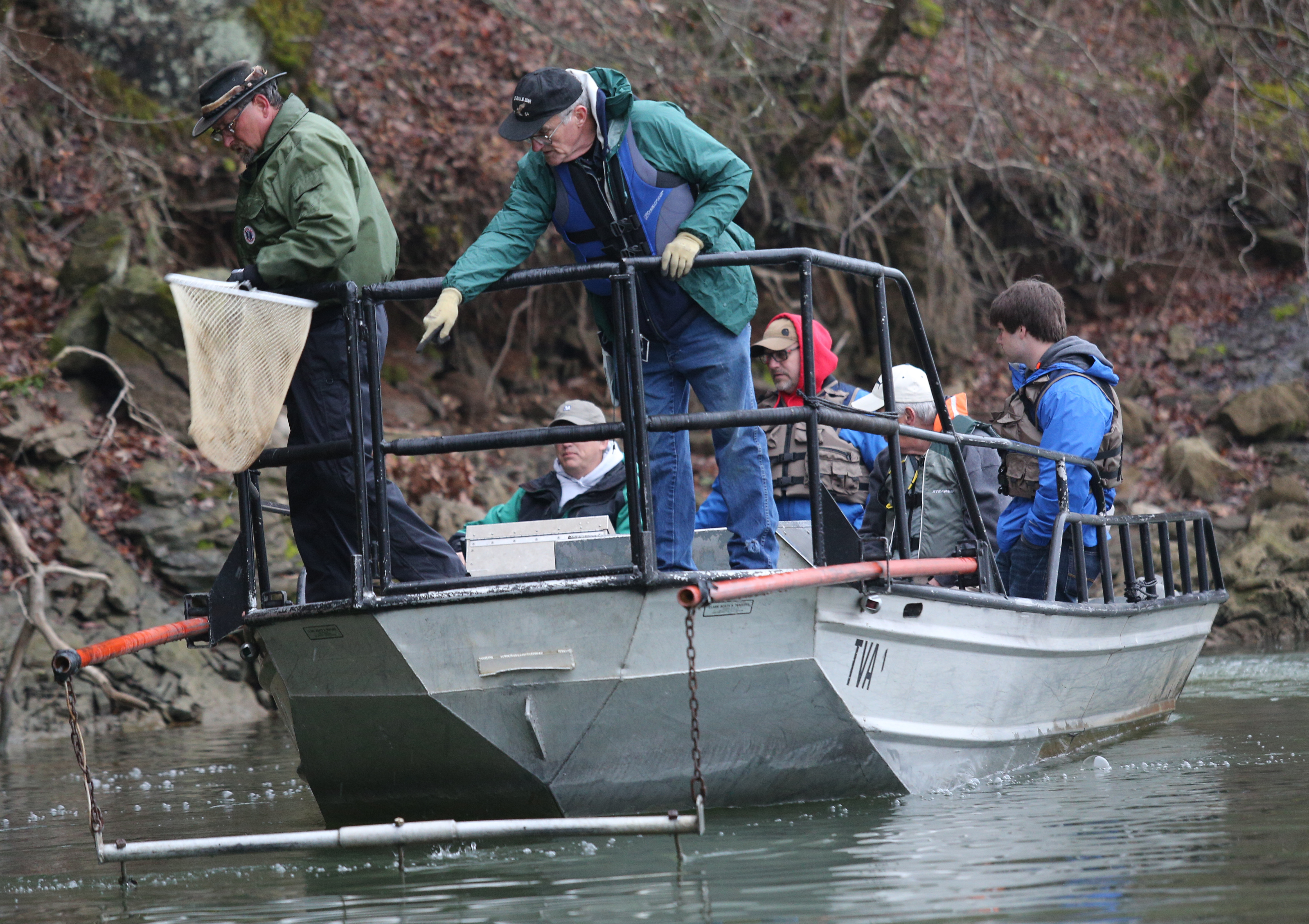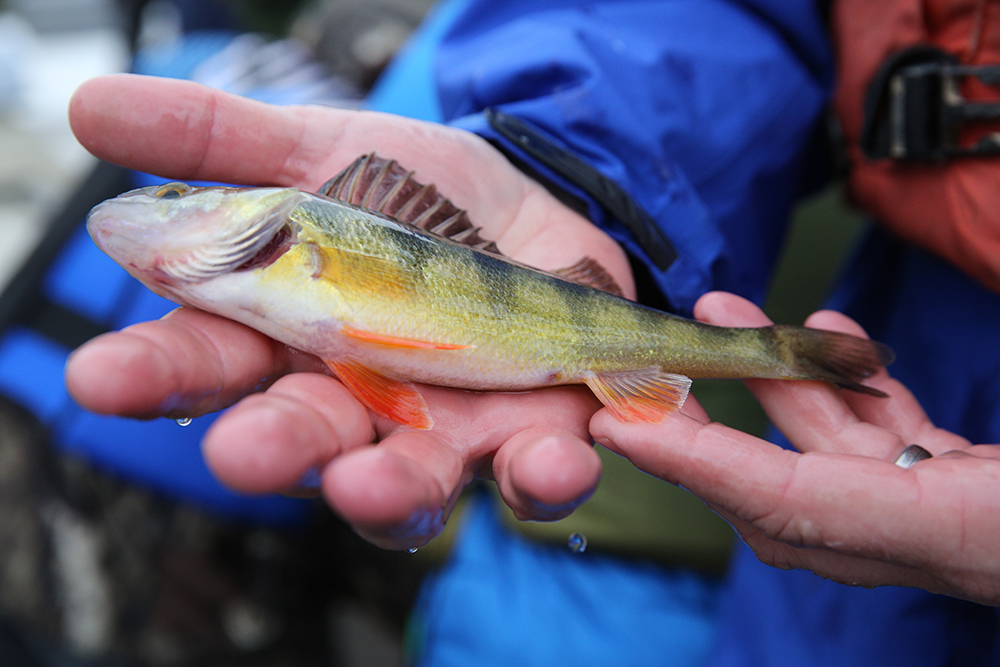With a splash, a net went into the creek to scoop up a largemouth bass. Moments later, it returned to the water to scoop up a couple of crappie.
Again and again in the cold early morning mists Tuesday, TVA reservoir fisheries biologists dropped their nets into the waters of Wolftever Creek as part of the Chickamauga Reservoir 2014 sport fish survey.
The biologists were using a method known as "electrofishing" -- stunning the fish, causing their muscles to tense and air bladder to close, bringing them floating to the surface, unharmed.
Because a fish's physiology is different, an electrical shock that could cause a person serious harm will only stun a fish, said Kurt Lakin, a TVA fisheries biologist and pilot of one of the survey boats.
Once the fish are brought to the surface, they're scooped from the water with a dip net and stored in a live well with an aerator and flowing water.
"The reason we collect this information is we use it internally, for compliance and permitting," said John Justice, a TVA biologist.
The data collected from the survey is used not only for a snapshot of that location and year, but also for longer-term trend analysis. The survey of each location takes 18 hours, with 12 half-hour trips to each habitat location per day, for three days per survey location.
"We use the data that we collect to ensure that our operations are supporting a healthy fishery," Justice said. "We can measure year class strength, spawning success, and a lot of that is impacted or affected by TVA's operations."
For the spring survey, biologists focused on sport fish, such as black bass -- largemouth, smallmouth and spotted -- and white and black crappie.
Common carp and catfish were left stunned, floating in the boat's wake.
Once the surveyors return to shore, the fish are unloaded from the boats in 70 quart buckets, measured, weighed and checked for wounds, parasites and illness. Once the survey is done, the fish are then returned to the water in various locations.
What the surveyors want is a good distribution of size classes, representative of the different ages of fish, with the middle-aged fish being a majority of those caught, Justice said.
Biologists also look for fresh hook injuries, to determine the area's success rate for sport fishing. The average success rate for anglers is about three to five percent of the sport fish population in a location.
Success for the survey crew means bringing in about one fish a minute for the half-hour fishing period. The Wolftever Creek survey brought in 53 fish in the first round, but it's likely to average out over the course of the day, Justice said.
After Wolftever, survey crews will complete the survey of the Chickamauga reservoir at Skull and Sale creeks, before continuing on to other reservoirs in the Tennessee River system.
The resulting data will be analyzed once all surveys have been completed, the last taking place May 1 at Swann's Bridge, part of the Douglas Reservoir system.
Contact staff writer Alex Harris at aharris@timesfreepress.com or 423-757-6592.


